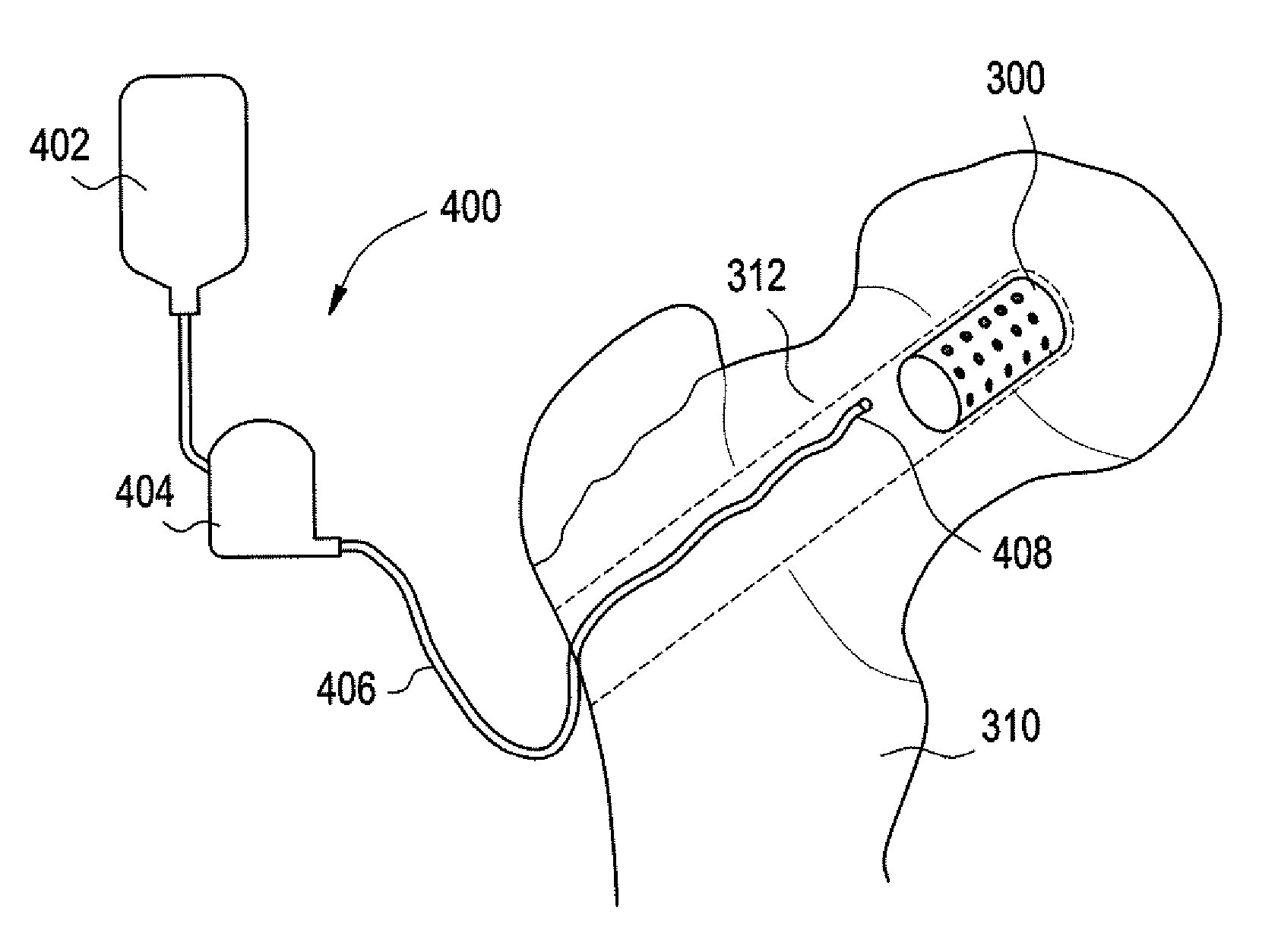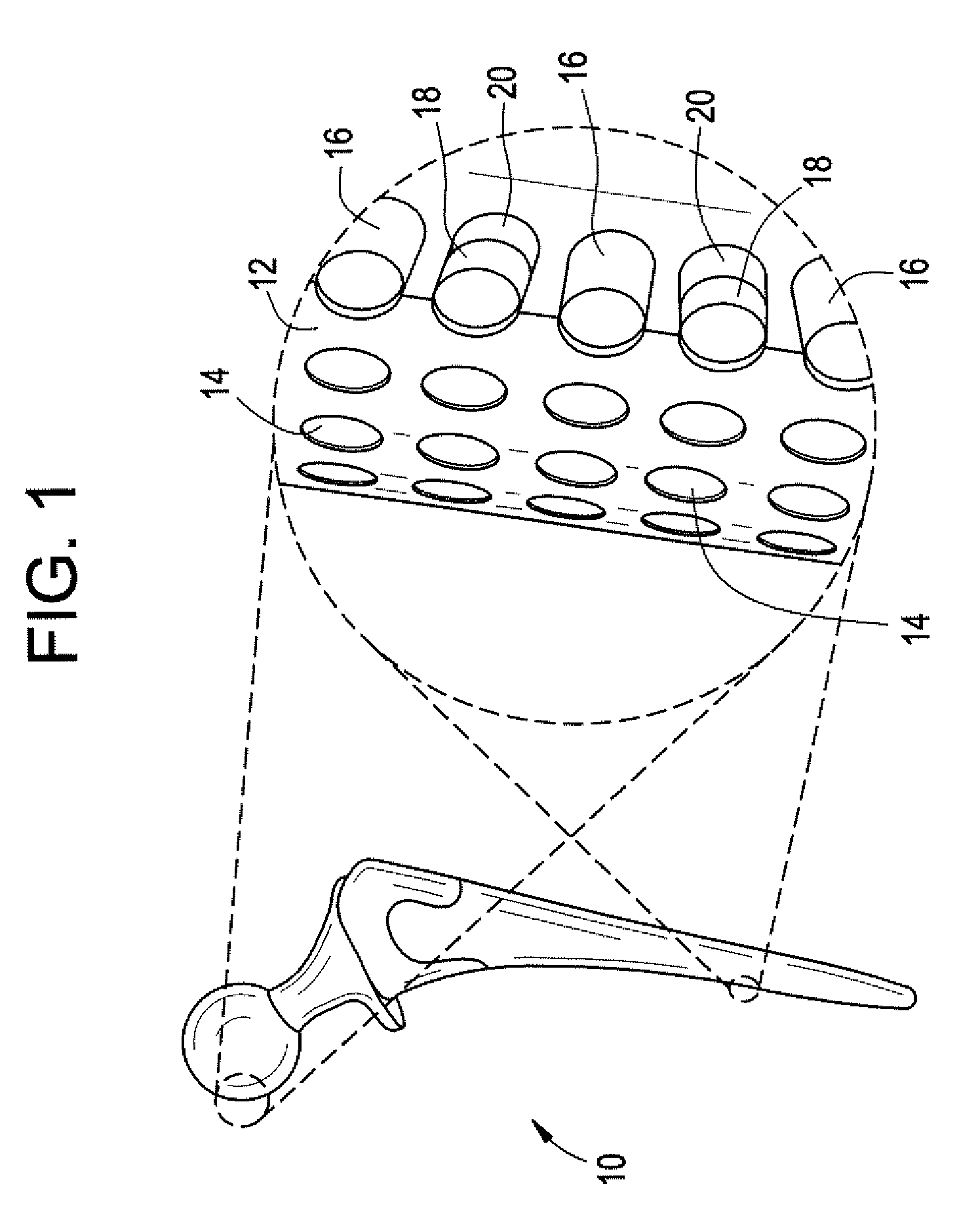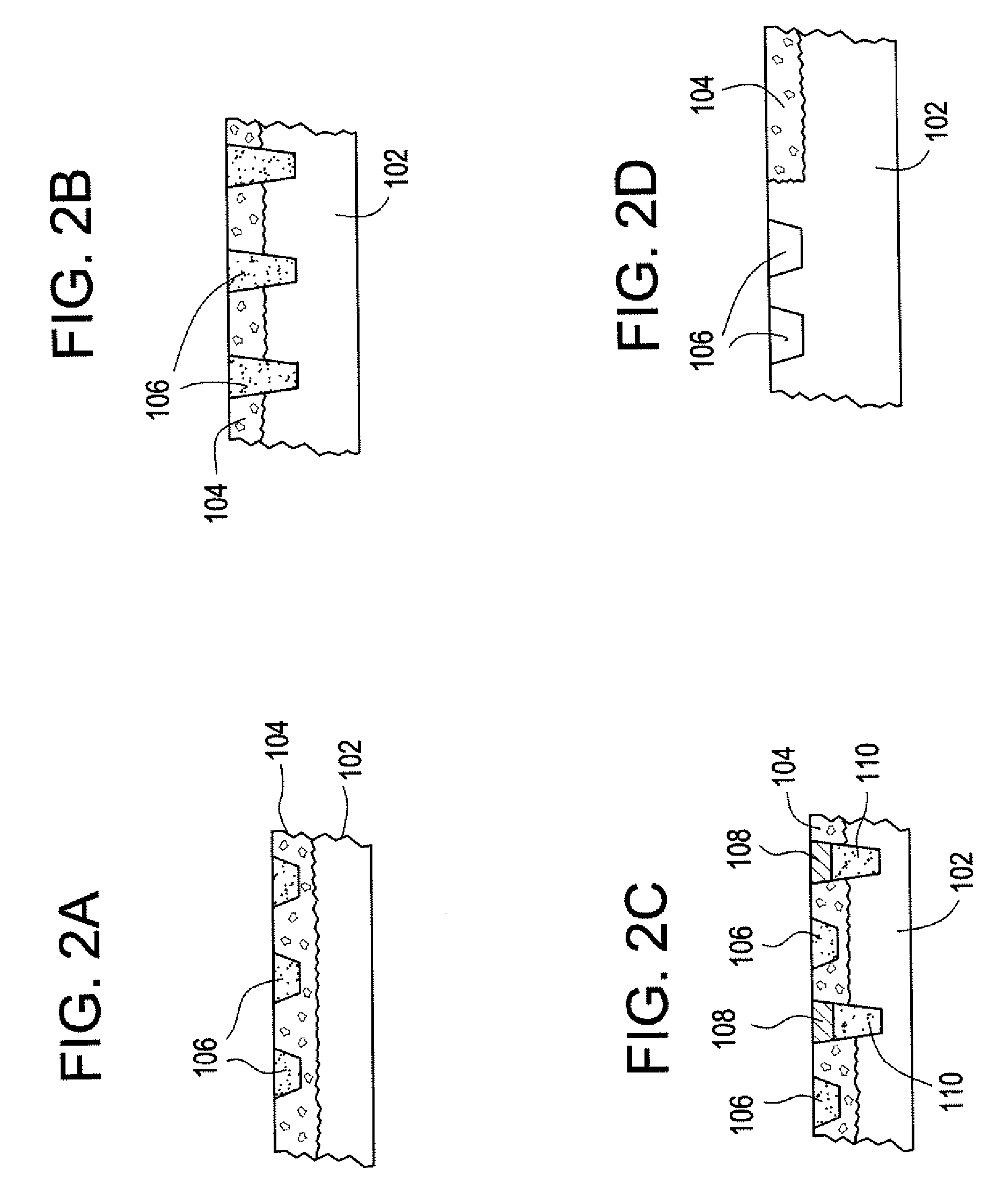Medical and dental implant devices for controlled drug delivery
a controlled drug and implant device technology, applied in dental surgery, dental implants, colonoscopy devices, etc., can solve the problems of loss of bone tissue at the interface with the prosthetic device, the loosening of the joint/prosthetic, and the end of the prosthetic implan
- Summary
- Abstract
- Description
- Claims
- Application Information
AI Technical Summary
Benefits of technology
Problems solved by technology
Method used
Image
Examples
Embodiment Construction
[0037] Implantable devices and methods of use have been developed to provide controlled delivery of therapeutic and prophylactic agents in the treatment and health of orthopedic, joint, spinal, and dental tissues. As used herein, the term “orthopedic” includes and is synonymous with the term “orthopaedic.” In one particular aspect, the devices and methods are used in the treatment of avascular necrosis, providing improved controlled delivery of bone growth promoters and other drugs directly where needed. As used herein, the terms “avascular necrosis” and osteonecrosis” are synonymous and may be used interchangeably.
[0038] In another aspect, the device is a prosthetic device. As used herein, the term “prosthetic” refers to medical and dental devices that are primarily used to secure together separate tissue portions or to provide a load bearing function. It is considered prosthetic in the sense that it is serving as a structural complement or substitute (permanently or temporarily) ...
PUM
| Property | Measurement | Unit |
|---|---|---|
| Temperature | aaaaa | aaaaa |
| Pressure | aaaaa | aaaaa |
| Structure | aaaaa | aaaaa |
Abstract
Description
Claims
Application Information
 Login to View More
Login to View More - R&D
- Intellectual Property
- Life Sciences
- Materials
- Tech Scout
- Unparalleled Data Quality
- Higher Quality Content
- 60% Fewer Hallucinations
Browse by: Latest US Patents, China's latest patents, Technical Efficacy Thesaurus, Application Domain, Technology Topic, Popular Technical Reports.
© 2025 PatSnap. All rights reserved.Legal|Privacy policy|Modern Slavery Act Transparency Statement|Sitemap|About US| Contact US: help@patsnap.com



